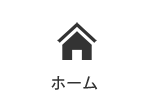本文
No.6(2003)1.Advantages of Raman spectroscopy over infrared spectroscopy in material analysis
Tsutomu SHINODA and Mitsuhide YOSHIKAWA
As well as infrared absorption, Raman scattering is generated by the vibrational motion of molecules. However, Raman spectroscopy is not so popular for the chemical analysis of materials as is infrared spectroscopy. We measured the Raman spectra of thirty-four substances with a near infrared FT-Raman Spectrometer. These spectra were compared with the infrared absorption spectra of these compounds. Three prominent features of the Raman spectroscopy were manifested, which are narrow line widths, water compatible and easy sampling. In the case of boron nitride, the full width at half the maximum (FWHM) of Raman scattering peak at 1366 cm-1 was almost one-tenth of that of infrared absorption band at 1375 cm-1. Sodium sulfate was detectable in the aqueous solution of concentration of 0.1 w/v% by the Raman scattering peak at 982 cm-1. Ammonium acetate could be identified in being packed in a polyethylene bag.
Keywords
Near infrared FT-Raman spectroscopy, Raman scattering, Infrared absorption, Narrow line width, Water compatible, Easy sampling













